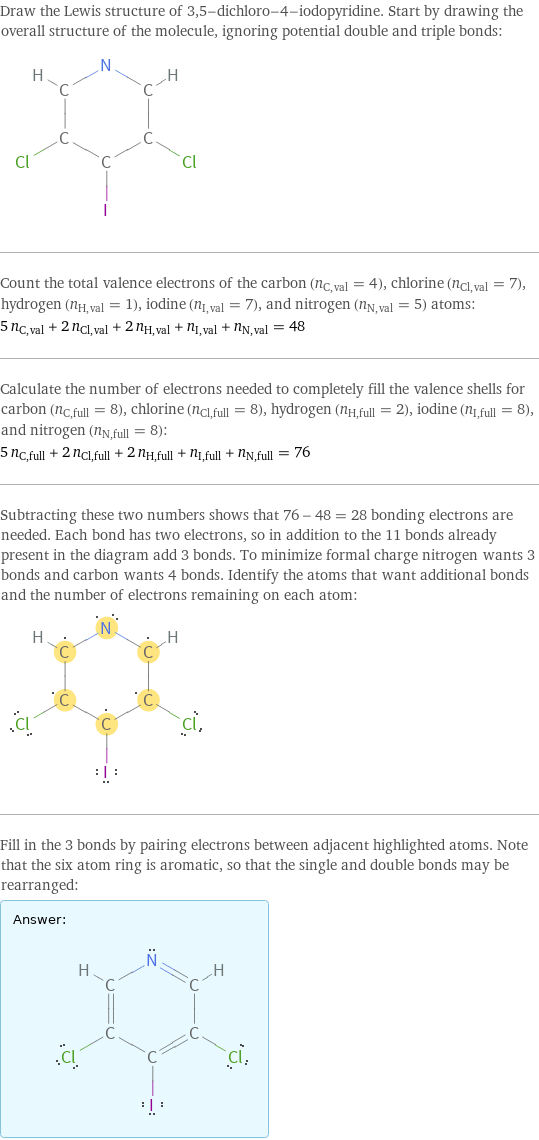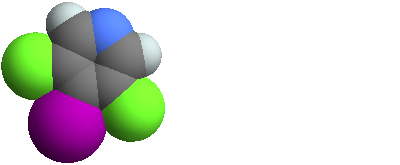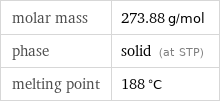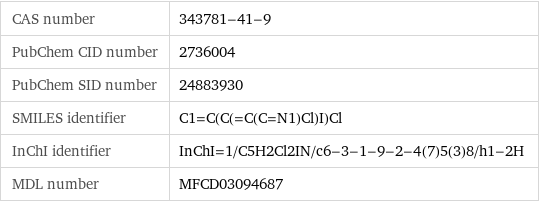Input interpretation

3, 5-dichloro-4-iodopyridine
Chemical names and formulas

formula | C_5H_2Cl_2IN name | 3, 5-dichloro-4-iodopyridine alternate names | 3, 5-dichloro-4-iodo-pyridine mass fractions | C (carbon) 21.9% | Cl (chlorine) 25.9% | H (hydrogen) 0.736% | I (iodine) 46.3% | N (nitrogen) 5.11%
Lewis structure

Draw the Lewis structure of 3, 5-dichloro-4-iodopyridine. Start by drawing the overall structure of the molecule, ignoring potential double and triple bonds: Count the total valence electrons of the carbon (n_C, val = 4), chlorine (n_Cl, val = 7), hydrogen (n_H, val = 1), iodine (n_I, val = 7), and nitrogen (n_N, val = 5) atoms: 5 n_C, val + 2 n_Cl, val + 2 n_H, val + n_I, val + n_N, val = 48 Calculate the number of electrons needed to completely fill the valence shells for carbon (n_C, full = 8), chlorine (n_Cl, full = 8), hydrogen (n_H, full = 2), iodine (n_I, full = 8), and nitrogen (n_N, full = 8): 5 n_C, full + 2 n_Cl, full + 2 n_H, full + n_I, full + n_N, full = 76 Subtracting these two numbers shows that 76 - 48 = 28 bonding electrons are needed. Each bond has two electrons, so in addition to the 11 bonds already present in the diagram add 3 bonds. To minimize formal charge nitrogen wants 3 bonds and carbon wants 4 bonds. Identify the atoms that want additional bonds and the number of electrons remaining on each atom: Fill in the 3 bonds by pairing electrons between adjacent highlighted atoms. Note that the six atom ring is aromatic, so that the single and double bonds may be rearranged: Answer: | |
3D structure

3D structure
Basic properties

molar mass | 273.88 g/mol phase | solid (at STP) melting point | 188 °C
Units

Chemical identifiers

CAS number | 343781-41-9 PubChem CID number | 2736004 PubChem SID number | 24883930 SMILES identifier | C1=C(C(=C(C=N1)Cl)I)Cl InChI identifier | InChI=1/C5H2Cl2IN/c6-3-1-9-2-4(7)5(3)8/h1-2H MDL number | MFCD03094687